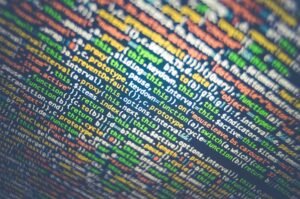Application of PCR
Polymerase Chain Reaction (PCR) is a powerful technique used in molecular biology to amplify a single or a few copies of a specific piece of DNA. Since its development in the 1980s, PCR has revolutionized research, diagnostics, and forensic science. By replicating DNA segments, PCR enables scientists to study and analyze genetic material with precision and efficiency.
Key Takeaways:
- PCR is a technique used to amplify DNA segments.
- PCR has numerous applications in research, diagnostics, and forensics.
- It allows scientists to study and analyze genetic material efficiently.
**The basis of PCR** is the ability of DNA polymerase to synthesize new strand of DNA complementary to the offered template strand. DNA polymerase activity was discovered in the late 1950s and early 1960s by Arthur Kornberg in studies of DNA replication in E. coli. PCR includes three major steps: denaturation, annealing, and extension. During denaturation, the DNA strands are separated by heating the reaction mixture. The temperature and time needed for denaturation vary depending on the DNA sample and primers used. The second step, annealing, involves cooling the reaction mixture to allow the primers to bind to the target DNA sequence. Finally, during extension, the DNA polymerase synthesizes a new DNA strand that is complementary to the template strand.
*PCR has the ability to amplify specific regions of DNA, making it a valuable tool in **diagnostic applications** such as identifying genetic disorders, detecting infectious diseases, and screening for genetic variations that can affect drug metabolism.
| Application | Description |
|---|---|
| Genetic Testing | Identifying mutations associated with genetic disorders. |
| Infectious Disease Diagnosis | Detecting the presence of pathogens in patient samples. |
| Pharmacogenetics | Screening for genetic variations that can influence drug response. |
Additionally, PCR is widely used in **research** to answer various biological questions. It enables scientists to study DNA sequences, gene expression patterns, and genetic variations in different organisms. In research applications, PCR can be used to analyze gene expression levels, study DNA-protein interactions, detect gene mutations, and much more.
*PCR’s versatility and sensitivity have made it an invaluable tool in **forensic science**. It can be used to analyze DNA samples and extract information for identification purposes. PCR has been instrumental in solving crimes, establishing paternity, and exonerating innocent individuals by providing definitive DNA evidence. It has revolutionized the field of forensic DNA analysis.
| Application | Description |
|---|---|
| DNA Profiling | Creating unique DNA profiles for identification purposes. |
| Forensic Paternity Testing | Determining biological parentage in legal cases. |
| Crime Scene Analysis | Identifying DNA present at crime scenes. |
In conclusion, PCR is a versatile and powerful technique that has transformed multiple scientific fields. Its applications in diagnostics, research, and forensic science have facilitated breakthroughs and advancements. PCR continues to play a vital role in understanding and manipulating DNA, contributing to advancements in various aspects of biology and medicine.

Common Misconceptions
Misconception 1: PCR can be used interchangeably with DNA sequencing
One common misconception is that polymerase chain reaction (PCR) and DNA sequencing are the same or can be used interchangeably. However, PCR and DNA sequencing are two distinct techniques with different purposes. PCR is a method used to amplify specific segments of DNA, while DNA sequencing is a technique used to determine the exact order of nucleotides in a DNA molecule.
- PCR is used to make multiple copies of a specific DNA segment
- DNA sequencing determines the exact sequence of nucleotides
- PCR is often used as a preliminary step before DNA sequencing
Misconception 2: PCR can be used to detect any type of genetic material
Another misconception is that PCR can detect and amplify any type of genetic material, including RNA or proteins. However, PCR is specific to DNA amplification and cannot directly amplify RNA or proteins. To amplify RNA, an additional step called reverse transcription (RT-PCR) must be performed to convert RNA into complementary DNA (cDNA) before PCR can be applied.
- PCR amplifies DNA, not RNA or proteins
- RT-PCR is used to convert RNA into cDNA for amplification
- PCR can be used to amplify specific regions of genes or whole genomes
Misconception 3: PCR always provides 100% accurate results
There is a misconception that PCR always provides 100% accurate results. However, PCR is a sensitive technique that can be affected by various factors and may produce false-positive or false-negative results. Contamination, primer or template design errors, as well as variations in PCR conditions, can lead to inaccurate results. It is important to validate PCR results through repetition, controls, and other complementary techniques.
- PCR results should be validated through repetition and controls
- Contamination or design errors can lead to inaccurate results
- Additional techniques like DNA sequencing can be used to confirm PCR results
Misconception 4: PCR is only used in medical and diagnostic fields
Many people believe that PCR is exclusively used in medical and diagnostic fields for detecting diseases or genetic disorders. While PCR is indeed widely utilized in these areas, it has many other applications across various fields of research. PCR is used in forensic science, environmental monitoring, food safety testing, and even in ancient DNA studies to amplify and analyze specific DNA sequences.
- PCR is used in fields beyond medicine and diagnostics
- PCR is applied in forensic science for DNA profiling
- PCR is used in environmental monitoring and food safety testing
Misconception 5: PCR is a complex and time-consuming technique
Lastly, there is a misconception that PCR is a complex and time-consuming technique that requires specialized equipment and expertise. While PCR does require some technical skills and specific laboratory equipment, advancements in technology have simplified and accelerated the process. Techniques like real-time PCR or quantitative PCR (qPCR) allow for faster PCR amplification and real-time monitoring of the amplification process.
- PCR technology has become more accessible and user-friendly
- Real-time PCR allows for faster amplification and monitoring
- PCR can be performed in standard molecular biology laboratories

PCR Application in Medicine
Polymerase chain reaction (PCR) is a revolutionary biotechnology technique used to amplify specific DNA sequences. In the field of medicine, PCR has played a crucial role in various applications, such as diagnosis, treatment, and research. This article explores ten interesting examples showcasing the wide-ranging applications of PCR in the medical domain.
1. Identification of Infectious Diseases
PCR enables rapid and accurate identification of infectious diseases. By targeting specific DNA or RNA sequences of pathogens, PCR-based assays can detect a broad range of infectious agents, including bacteria, viruses, and parasites, aiding in timely diagnosis and appropriate treatment.
2. Cancer Diagnosis and Monitoring
PCR allows for the identification of cancer-related genetic alterations, aiding in early diagnosis and personalized treatment plans. Additionally, quantitative PCR can monitor the response of tumors to therapy and detect residual disease, helping healthcare providers tailor patient care.
3. Pharmacogenomics
PCR-based genotyping is used to determine genetic variations that influence an individual’s response to specific medications. This information allows for the development of personalized treatment strategies and reduces the risk of adverse drug reactions.
4. Forensic Testing
PCR plays a vital role in forensic investigations by providing a powerful tool for DNA profiling. It allows for the identification of individuals, determination of parentage, and analysis of crime scene evidence, contributing to the justice system and ensuring accuracy in criminal investigations.
5. Prenatal Genetic Testing
PCR-based tests such as amniocentesis and chorionic villus sampling are utilized to detect genetic abnormalities in unborn babies. These methods enable early diagnosis of conditions such as Down syndrome, allowing parents to make informed decisions regarding their child’s healthcare needs.
6. Infectious Disease Research
PCR facilitates the study of infectious diseases by amplifying and analyzing DNA or RNA sequences of pathogens. This provides valuable insights into the molecular mechanisms of disease, aiding in the development of new treatments and vaccines.
7. Transplantation Medicine
PCR-based tissue typing is used to determine compatibility between donors and recipients in organ transplantation. By analyzing specific genetic markers, PCR helps minimize the risk of organ rejection and improves the success rates of transplantation procedures.
8. Wildlife Conservation
PCR is instrumental in wildlife conservation efforts, as it allows researchers to determine the presence of endangered species in a particular habitat. By amplifying unique genetic markers, PCR aids in biodiversity studies, protection of vulnerable species, and the development of conservation strategies.
9. Food Safety
PCR-based techniques are employed to detect contaminants, allergens, and foodborne pathogens in the food industry. This ensures the safety and quality of food products, helping to prevent outbreaks and protect consumer health.
10. Genomic Research
PCR has revolutionized genomic research by enabling the amplification of DNA for sequencing, genetic mapping, and gene expression analysis. This powerful technique fuels advancements in the understanding of genetic disorders, drug discovery, and personalized medicine.
Conclusion
Polymerase chain reaction (PCR) has emerged as a versatile tool with diverse applications in the field of medicine. Its impact ranges from accurate disease identification and personalized treatment strategies to aiding in forensic investigations and wildlife conservation. By amplifying specific DNA sequences, PCR enables scientists, healthcare professionals, and researchers to delve deeper into the genetic aspects of various disciplines, revolutionizing the way we understand and approach medical science.
Frequently Asked Questions
What is PCR?
PCR, or polymerase chain reaction, is a laboratory technique used to amplify a specific DNA segment. It allows researchers to make numerous copies of a DNA sequence, making it easier to analyze and study.
How is PCR used in genetic testing?
PCR plays a crucial role in genetic testing. It helps identify genetic abnormalities by detecting specific DNA sequences associated with certain diseases or conditions. By amplifying these target sequences, PCR enables the accurate diagnosis of genetic disorders and helps determine appropriate treatment plans.
What are the steps involved in PCR?
PCR typically involves three main steps: denaturation, annealing, and extension. In denaturation, the DNA sample is heated to separate the double-stranded DNA into individual strands. Next, during annealing, short DNA primers bind to the target sequences on each DNA strand. Finally, in the extension step, a DNA polymerase enzyme adds nucleotides to extend the primers, creating copies of the target DNA segment.
Why is PCR considered important in forensic science?
PCR is crucial in forensic science as it allows the amplification of minute amounts of DNA found at crime scenes. By amplifying and analyzing specific DNA segments, forensic scientists can link individuals to the crime or eliminate them as suspects. PCR has revolutionized forensic investigations, increasing the accuracy of DNA profiling and aiding in solving crimes.
What is the significance of PCR in medical research?
PCR has revolutionized medical research by enabling the study of genetic mutations, identifying disease-causing genes, and developing diagnostic tests. It plays a vital role in fields such as cancer research, infectious disease diagnosis, and pharmacogenomics. PCR has dramatically accelerated advancements in understanding human health and has implications for personalized medicine.
Can PCR be used for paternity testing?
Yes, PCR is commonly used for paternity testing. It allows the amplification of specific DNA segments from the child and potential father, which are then compared to establish the probability of biological paternity. PCR-based DNA tests are accurate, reliable, and widely accepted as evidence in legal cases.
What are the limitations of PCR?
Although PCR is a powerful tool, it does have limitations. One major limitation is the risk of contamination, which can lead to false results. PCR can also struggle with DNA templates of poor quality or low quantity. Additionally, PCR may face challenges amplifying regions with high secondary structures, repetitive sequences, or DNA modifications. These limitations require careful optimization and validation of PCR assays.
Is PCR only used on DNA samples?
No, PCR can also be used to amplify RNA through a technique called reverse transcription PCR (RT-PCR). RT-PCR allows scientists to study gene expression by converting RNA into complementary DNA (cDNA) using an enzyme called reverse transcriptase. The cDNA can then be amplified using PCR, enabling the analysis of RNA transcripts.
How has PCR impacted the field of infectious disease diagnostics?
PCR has revolutionized infectious disease diagnostics by allowing rapid and accurate detection of pathogens. PCR-based tests can identify bacteria, viruses, and other infectious agents by detecting their specific DNA or RNA sequences. This has enabled early and precise diagnoses, leading to improved patient care, outbreak control, and the development of targeted therapies and vaccines.
Is PCR used in the food industry?
Yes, PCR is widely used in the food industry for various applications. It allows the detection of genetically modified organisms (GMOs) in food products, ensures accurate labeling, and helps identify foodborne pathogens like Salmonella and E. coli. PCR-based testing ensures food safety, quality control, and compliance with regulatory standards.





